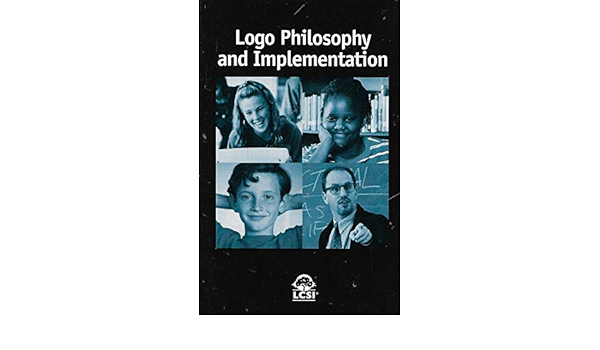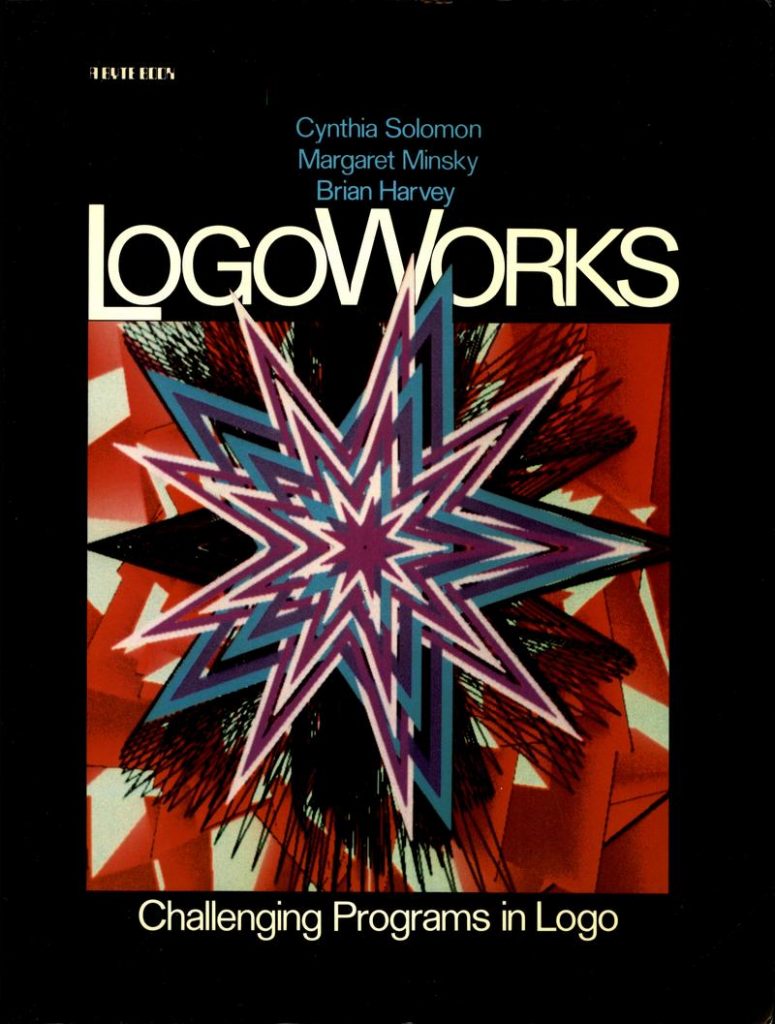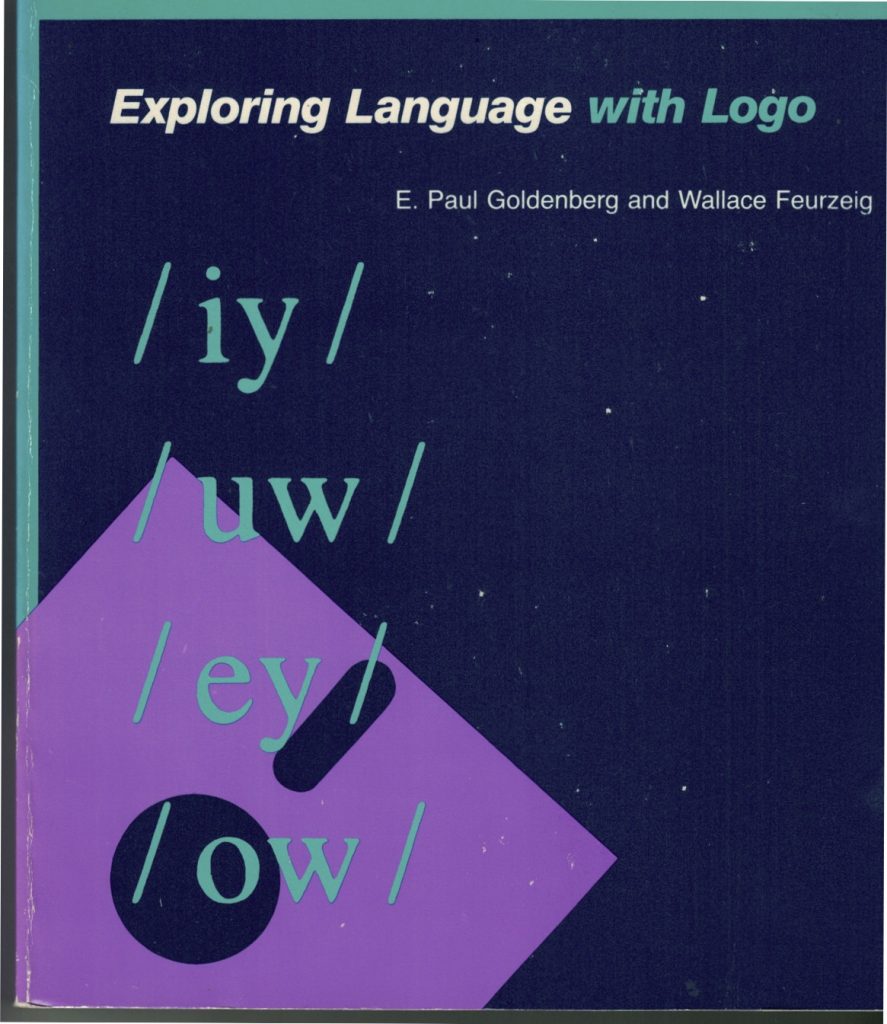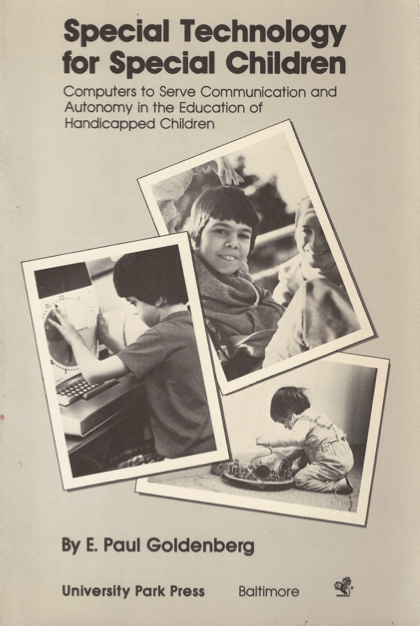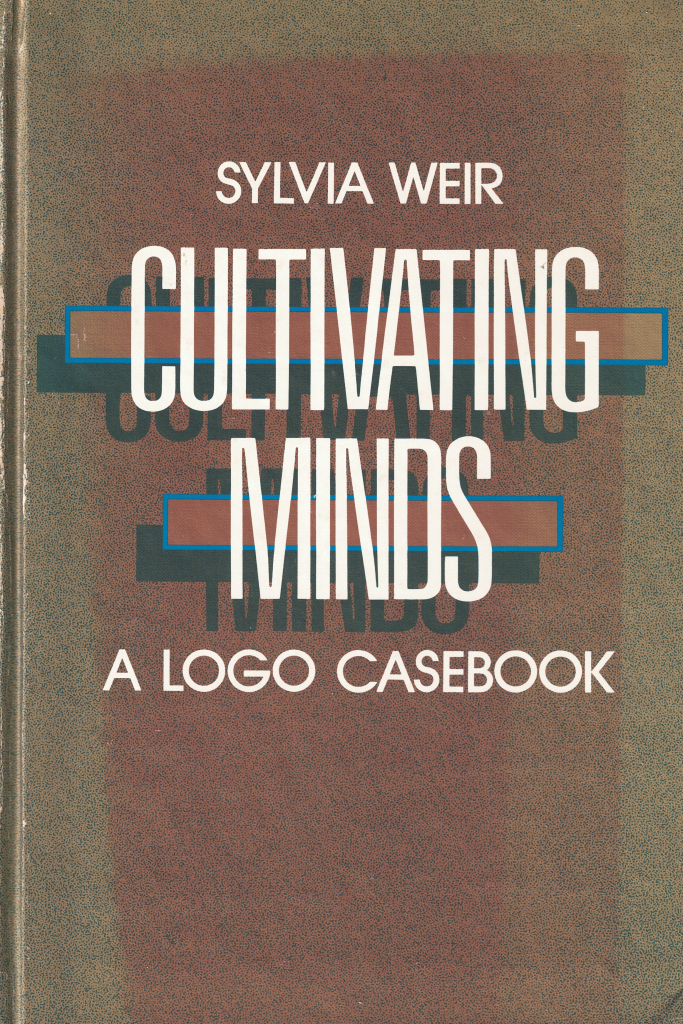In 1967, Seymour Papert, Cynthia Solomon, Wally Feurzeig created the first programing language for children, Logo. This page curates a growing collection of resources related to learning more about Logo and how to teach it.
History of Logo paper
Solomon, C., Harvey, B., Kahn, K., Lieberman, H., Miller, M. L., Minsky, M., Papert, A., & Silverman, B. (2020). History of Logo. Proceedings of the ACM on Programming Languages, 4(HOPL), 1-66.

What is Logo? And Who Needs It? by Seymour Papert
A brief 1999 essay by Seymour Papert in which he describes Logo, its origins, and its role in the educational technology landscape. Read it here.
Video discussion of Logo history
Dr. Cynthia Solomon and Dr. Wally Feurzig were interviewed by Dr. Celia Hoyles and Dr. Gary Stager at the Constructionism 2010 Conference, August 2010 in Paris, France.
Logo history Interview from Gary Stager on Vimeo.
Twenty Things to Do with a Computer
The seminal 1971 paper authored by Seymour Papert & Cynthia Solomon
Cynthia Solomon’s LogoThings web site
Lots of historic artifacts and resources curated by the mother of educational computing and co-creator of Logo, Dr. Cynthia Solomon
Twenty Things to Do with a Computer Forward 50: Future Visions of Education Inspired by Seymour Papert and Cynthia Solomon’s Seminal Work
A new (2021) book collecting four dozen essays by leading thinkers and educators about the past, present, and future of education.
Logo Philosophy and Implementation
A 1999 book published by Logo Computer Systems, Inc., featuring essays by leading educators about Logo use around the world.
21st Century skills suggest that teachers should be able to read, understand, generalize, and apply the principles of these seminal texts to contemporary contexts. Reach out if you need assistance.
Modern Logo Dialects and Descendants
Turtle Art
Turtle Art is a wonderful web-based turtle graphics environment for turning mathematical ideas into beautiful art. It may be the most welcoming context for introducing the powerful ideas inherent in Logo programming to teachers and students. This page includes links to resources for using Turtle Art with learners of all ages.

Lynx is a web-based Logo dialect, complete with multiple turtles, parallelism, multimedia, and online sharing.
- Getting Started with Lynx
- Experimenting with Word and List Processing in Lynx
- Lynx Logo Quilt Project Starter
The Invent To Learn Guide to Block Programming
A curated collection of links to Logo-like environments and related resources post-2020. Turtle Art, Lynx, Snap!, Scratch, MakeCode, microBlocks, and more are detailed here.
The Logo Exchange
Logo Exchange Archives (1982 – 1999)
Links to the complete archive of Logo Exchange journal issues for 17 years.

Logo at MIT
MIT Logo Memos
A collection of research papers from the MIT Artificial Intelligence and Logo Groups, 1971 – 1981
MIT Logo Conference Proceedings
MIT hosted legendary Logo conferences during the summers of 1984-1986. Here are the proceedings.
East Coast Logo Conference Proceedings
A Logo Conference, organized by Tom Lough, founder/publisher of Logo Exchange and Glen Bull of the University of Virginia, was held in Crystal City, Virginia (Washington D.C.) in April, 1987.
EuroLogo and Constructionism Conference Proceedings
The biannual Constructionism Conference is an international gathering of academics and practitioners interested in Papert’s theory of constructionism. The Constructionism Conference is the successor to the EuroLogo Conference which ran every two years from the 1980s until 2007.
- Constructionism 2020 – Dublin, Ireland
- Proceedings from COVID-19 cancelled conference
- Constructionism 2018 – Vilnius, Lithuania
- Constructionism 2016 – Thailand, Bangkok
- Constructionism 2014 – Austria, Vienna
- Constructionism 2012 – Greece, Athens
- Proceedings (PDF)
- Proceedings (HTML in zip file)
- Proceedings (PDF)
- Constructionism 2010 – France, Paris
- Eurologo 2007 in Bratislava, Slovakia
- Eurologo 2005 in Warsaw, Poland
- Eurologo 2003 in Porto, Portugal
- Eurologo 2001 (Linz, Austria) program
- Eurologo 2001 proceedings
- Report on Eurologo 2001, by Marta Turcsanyi-Szabo, including a poem by Jenny Sendova
- Eurologo 2001 proceedings
- Eurologo 1999 program and abstracts (held in Sofia, Bulgaria)
- Eurologo 1997, Budapest, Hungary
Classic Books
LogoWorks: Challenging Programs in Logo
A complete book of challenging Logo programming projects by Cynthia Solomon, Margaret Minsky and Brian Harvey in PDF form
Computer Science Logo Style by Brian Harvey
Veteran computer science educator and co-creator of Snap!, Dr. Brian Harvey, published three seminal books about computer science taught in a Logo environment. These three volumes constitute a thorough computer science education, at least for non-computer science majors. These texts are available for free online in HTML and PDF form.

Teaching with Logo
There were no bigger stars in educational computing in the 1980s than Dan and Molly Lynn Watt. Their 1986 book, Teaching with Logo: Building Blocks in Learning, is a model of progressive pedagogical practices in a modern computational context.
Turtle Confusion and Turtle Speaks Mathematics by Barry Newell
Dr. Barry Newell, is an astrophysicist who was was the Administrator (in the NASA sense) of Mount Stromlo and Siding Spring Observatories of the Australian National University. He now works on the dynamics of social-ecological systems.

In his spare time (back in 1988), Newell wrote two classic books on Logo programming and mathematics, Turtle Confusion and the accompanying book for educators, Turtles Speak Mathematics. Turtle Confusion features 40 challenging turtle geometry puzzles in a mystery format and Turtles Speak Mathematics helps educators understand the mathematics their students are learning.
Exploring Language with Logo by E. Paul Goldenberg & Wallace Feurzeig
Exploring Language with Logo uses the underutilized word and list processing functionality of Logo to “mess about” with phonetics, grammar, poetry, language translation, and more in a mathematical context that instantly requires readers to confront probabilistic behavior, conditionals, variables, functions, recursion, parsing, concatenation, and countless big ideas from linguistics, computer science, mathematics, and literature.
The delightful, playful, and intellectually rich projects explored in this book may be more relevant in the age of AI Mania than when first published 35 years ago. Learn more…
Special Technology for Special Children by E. Paul Goldenberg
Special Technology for Special Children, was published in 1979, and explores how computers and computing could enhance the lives and knowledge construction of children with special needs. Although forty-five years old, the book contains a great deal of research-based insights and practical ideas that still resonate today.
The author, a member of the MIT Logo Group in the 1970s and longtime Senior Scientist at Education Development Center, has graciously agreed to allow us to share a PDF of this important, but out-of-print book for educational use.
Cultivating Minds: A Logo Casebook by Sylvia Weir
This important, and often overlooked text, focuses on enhancing learning using the Logo programming language, particularly for individuals with special needs. It integrates case studies involving the use of microcomputers with theoretical insights, aiming to provide educators with strategies for understanding and supporting diverse cognitive processes in their students. The book highlights the importance of creating tailored computational environments that cater to individual learning styles and needs.
Weir discusses the role of computers as tools for gaining insights into how students learn, emphasizing their use as “information prostheses.” The text covers various topics including the application of computers in education for children with autism and other disabilities, the development of spatial learning strategies for those with learning disabilities, and the potential for computers to aid in cognitive development.
The book spans a range of subjects such as “Structured Discovery,” “The Computer as Empirical Window,” and “Building Good Artifacts That Structure ‘Messing About‘,” offering a unique lens into how educational environments may be optimized and intellectual power unlocked using technology to amplify learning.
Re-reading this brilliant text is a reminder of why Seymour Papert was so fond of Dr. Weir and her work. Weir’s research with special needs learners brilliantly synthesizes so many of Papert’s powerful ideas and helps readers imagine how computing not only provides a window into the thinking of learners, even non-verbal ones, but holds the potential to supercharge human potential.
About Sylvia Weir
Sylvia Weir was born in 1925 in Benoni, South Africa, and died in 2018. She was a pediatrician who specialized in artificial intelligence and robotics applications in autism therapy. Weir studied medicine at the University of the Witwatersrand, earning a dual Bachelor of Medicine and Bachelor of Surgery degree before working as a researcher Edinburgh University in one of the wold’s first artificial intelligence departments.
In 1978, Sylvia Weir left Scotland to collaborate with Seymour Papert at MIT. Their joint work focused on educational technology and its applications for children with special needs, including those with disabilities and learning disorders. Her contributions to this field of expertise are singular and important. For many years, she worked at TERC developing science education materials, in addition to her research on using technology to enrich the lives of people with special needs. Like Papert, Weir engaged in anti-apartheid activism before leaving South Africa.
- Here’s a 1994 science education article, Reflecting on Practice, Weir co-authored with Tim Barclay at TERC.
- Weir, S. (1989). The computer in schools: Machine as humanizer. Harvard Educational Review, 59(1), 61.
Australian Logo Newsletters
POALL
In the late 1980s – early 1990s, Australian educator Peter Carter created his own Logo newsletter filled with clever programming project ideas. Here are the issues he was able to find, scan, and share.
- Issue 2-2
- Issue 2-3
- Issue 3-3
- Issue 3-4
- Issue 5-1
- Issue 5-2
- Issue 5-3
- Issue 6-2
- Issue 6-3
- Peter Carter bonus – Turtle Bunting(making flags in Logo)
OzLogo Newsletter
In the early 1990s, a group of Australian educators published a newsletter for Logo-using educators.
Literature Review
Clements, D. H., & Meredith, J. S. (1993). Research on Logo: Effects and efficacy. Journal of Computing in Childhood Education, 4(4), 263-290.
Logo Action Research
New Paradigms in Classroom Research on Logo Learning by Daniel Lynn Watt and Molly Lynn Watt
A research monograph (book) of teacher action research funded by the National Science Foundation.Watt, D. L., & Watt, M. L. (1993). New Paradigms in Classroom Research on Logo Learning. International Society for Technology in Education.
Logo Action Research paper by Daniel Lynn Watt and Molly Lynn WattMolly Lynn Watt & Daniel Lynn Watt (1993) Teacher Research, Action Research: the Logo Action Research Collaborative, Educational Action Research, 1:1, 35-63, DOI: 10.1080/0965079930010104
Miscellaneous Cool Stuff
Logo Quilt Project
Use Turtle Art or Lynx to create collaborative Logo quilts.
Getting Started with ArtLogo
Links to Brian Silverman’s web-based Logo interpreter.
Logo Overnight by Mitchel Resnick
A collection of Logo programming challenges taking advantage of computing power and time.
Papers by Cynthia Solomon
Teaching Young Children to Program in a Logo Turtle Computer Culture
Report: Logo Learning and Teaching Styles
ACM SIGCUE BULLETIN, July, 1978, pps. 20-29.
A First Lesson
1974 Logo Working Paper 26
Articles by the Watts
Teacher-Made Microworlds: or Training Teachers to Use Logo Logo vs. Training Them to Teach It by Dan WattWatt, D. (1985). Teacher-Made Microworlds: or Training Teachers to Use Logo Logo vs. Training Them to Teach It Educational Computing Organization of Ontario.
Dan Watt’s 1985 paper on Teacher-Made microworlds sent me down a rabbit hole of re-reading Papert’s theories of learning in a microworld. These papers offer a direct response to the calls for explicit instruction.
The Power of Logo by Dan and Molly Watt (late 1980s)
Twenty Powerful Ideas by Molly WattWatt, M. (1985). Twenty Powerful Ideas. National Logo Exchange (September 1985).
Logo Quilt: A Collaborative Learning Project by Dan and Molly Lynn Watt in the May 1986 issue of Logo Exchange.This is the original seed that has blossomed into many projects, notably Josh Burker’s Turtle Art Tiles Project.
Gary Stager Article(s)
- Scratch and the Negligent Homicide of Mathland (2020)
- A Modest Proposal (2017)
Practical ideas for inspiring the teaching of computing to all students.
